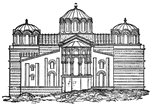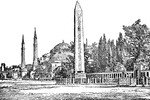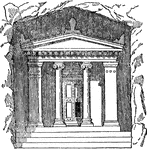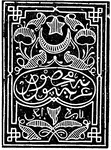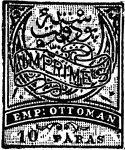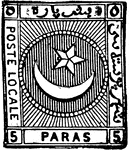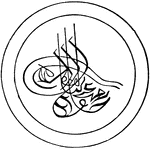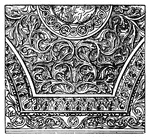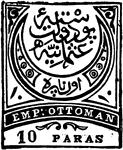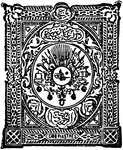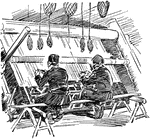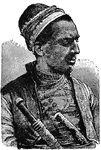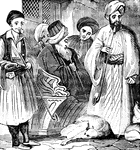Turkey
The Turkey ClipArt gallery offers 36 images of Turkey, including famous landmarks, plans of mosques, stamps, and more. Please note that although Turkey is classified under the Middle East, many of the illustrations in this gallery are actually of of Istanbul (Constantinople), which is in the part of Turkey located in Europe. See also the Byzantine Empire, Byzantine Architecture, and Byzantine Ornament ClipArt galleries.

Constantinople
An illustration of the fortification around Constantinople and soldiers firing cannons.

Fatih Mosque (Plan)
The Fatih Mosque (Mosque of Mehmet II, Mosque of Mehmet the Conqueror) was constructed by order of Fatih…
Hagia Sophia
Cross section of Hagia Sophia in Istanbul (historically Constantinople). The Greek name Hagia Sophia…

Exterior of Hagia Sophia
"Exterior of the Church of Sta. Sophia at Constantinople. Although the impression conveyed by this church…
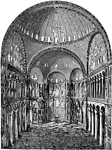
Interior of Hagia Sophia
"Interior of the Church of Sta. Sophia at Constantinople. Besides the Narthex, there was a second vestibule:…
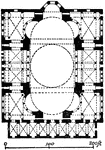
Plan of Hagia Sophia
Hagia Sophia is a former patriarchal basilica, later a mosque, now a museum in Istanbul, Turkey. Famous…

Section of Hagia Sophia
Hagia Sophia is a former patriarchal basilica, later a mosque, now a museum in Istanbul, Turkey. Famous…

Section of Hagia Sophia
"Section of the Church of Sta. Sophia at Constantinople. The Byzantine style of this first period reached…

Hittite Women
An illustration of two Hittite women sitting. The Hittites were an ancient Anatolian people who spoke…
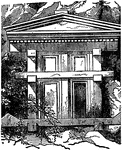
Lycian Tomb
"Lycia was, in ancient geography, a country on the S. coast of Asia Minor, extending toward Mount Taurus,…
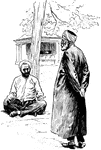
Turkish men
"There are scores of men in long gowns, with white, red, blue, or green turbans about their heads."…

Tomb of Midas
"Midas was, in Greek legend, a King of Phrygia. For his kindness to Silenus he was promised by Dionysus…

Miletus Coin
"A representation of a very early double stater of Miletus, in Ionia, of which the type is the lion's…
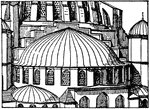
Suleimanié Mosque
"Semi-dome, exterior. Apse of Suleimanié Mosque, Constantinople (A.D. 1550)." -Whitney, 1911

Suleimanié Mosque
"Semi-dome, interior. Apse of Suleimanié Mosque, Constantinople (A.D. 1550)." -Whitney, 1911
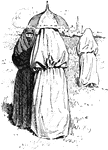
Turkish women
"These are two Turkish women, who have their heads and faces wrapped up." —Carpenter, 1902

